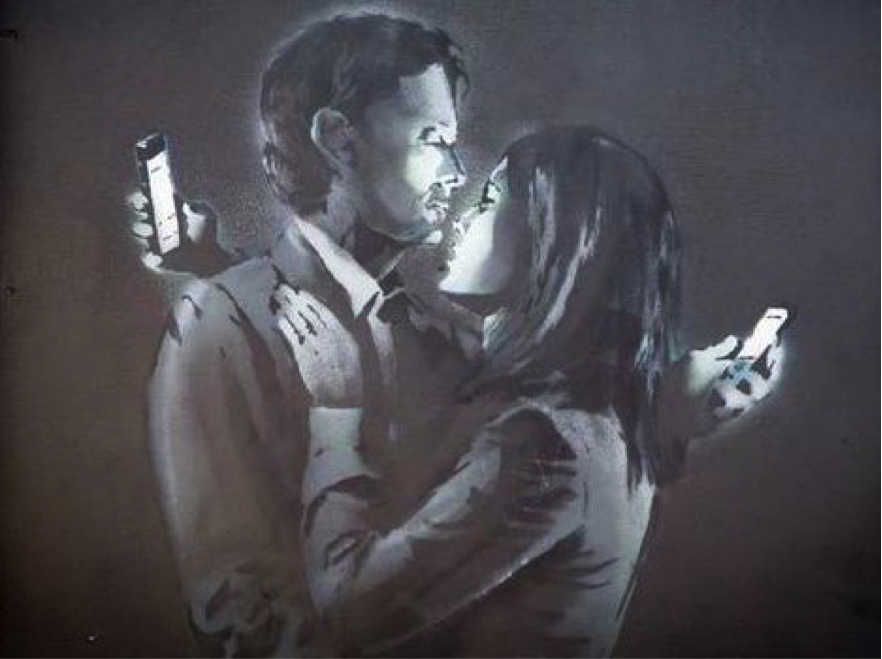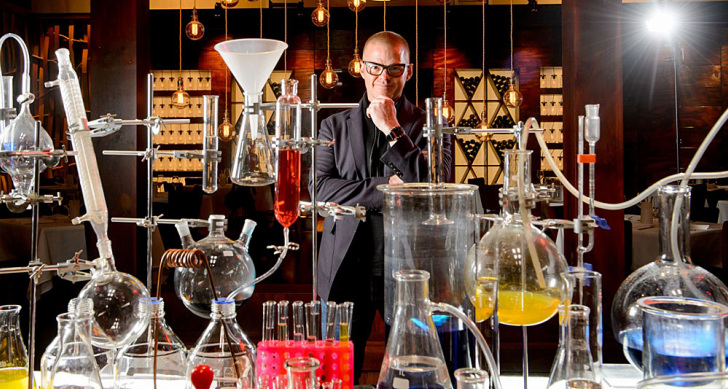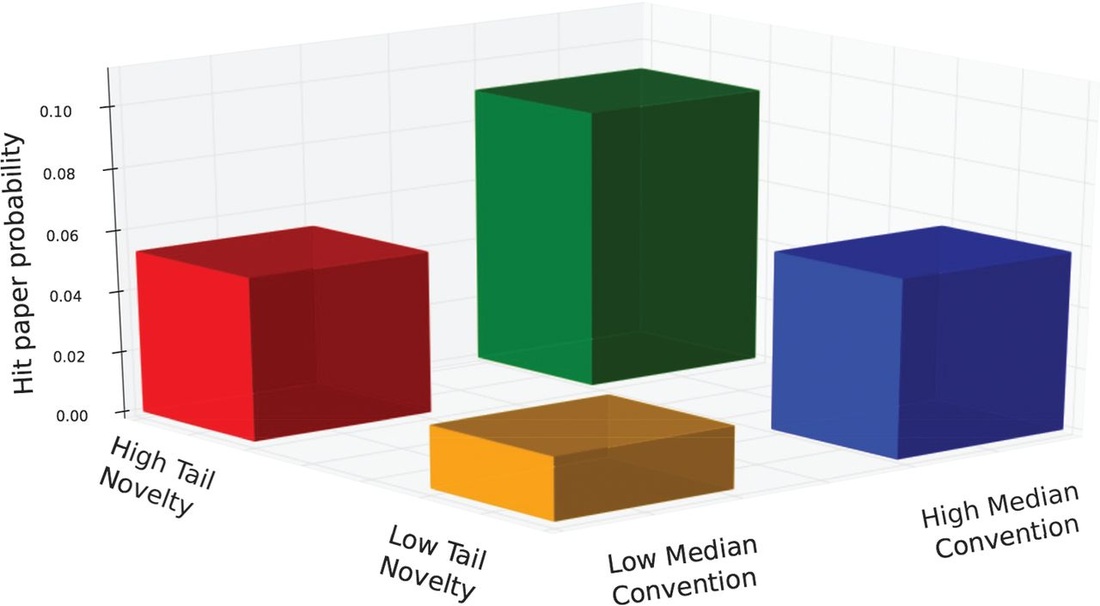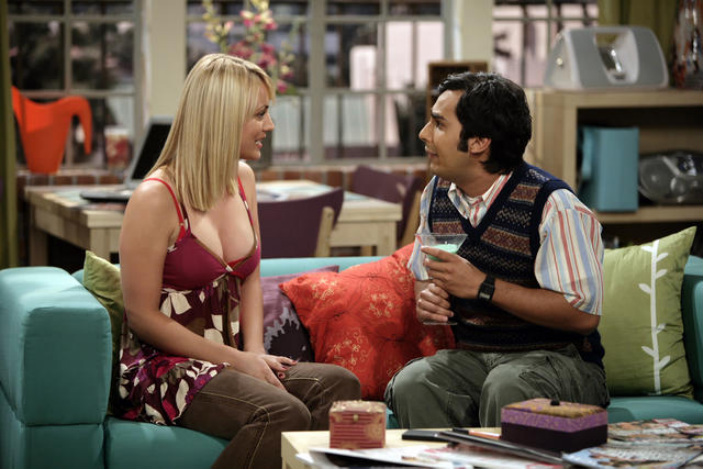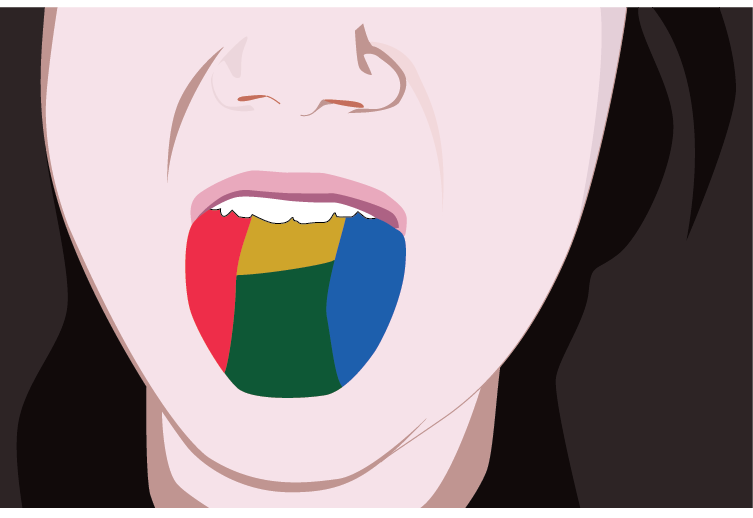How often have you seen a couple at a restaurant engrossed in their phones instead of each other? Most of us agree that this occurs all too frequently. Indeed, you could easily believe that personal connections have become less valuable to us than digital ones.
Ironically, it is precisely our need for constant personal interaction that has fueled digital interaction. However, they are not the same and are definitely not interchangeable. On the one hand, we love technology—most of use could never be without our smart phones. On the other, we are wired to love tangible and physical interaction. For the joy of speaking to someone face to face, anticipating the curve of their lips as they begin to smile, and being washed over by the warmth of their voice, a smiley face just isn’t going to cut it.
Both personal interaction and digital interaction are necessary and important, but the key is knowing when to use each, and in particular how to resist the allure of digital when personal would be better and more fulfilling.
The Easy Temptation
The pull of technology today is in many ways no different than the lure of the Sirens in Homer’s epic poem, the Odyssey. The hero Odysseus sails home to Ithaca after the fall of Troy to reclaim his land and reunite with his family. Along his journey, he encounters the Sirens, whose song is so sweet that none can resist it: every previous sailor to hear the enchanting song immediately steered towards the Sirens, only to hit the rocks nearby and sink.
Odysseus knows that he wants to hear the song, but he also doesn’t want to crash the ship and fail in his quest. So, he literally puts himself “in a bind.” He has his crew tie him to the mast of the ship, and has the rest of the sailors fill their ears with beeswax, so that only he can hear the song, but he is tightly bound and cannot sink the ship.
By constraining himself this way, Odysseus actually achieves a better outcome. This tale from the Odyssey is an example of how behavioral economists approach “dynamic inconsistency,” the idea that our preferences may change over time in ways that directly conflict with previous desires. That is, I would like to have deeper engaging conversations with friends in person, but I know that when my phone vibrates I will immediately turn to the conversation my other friends are having on Twitter. I would like to have better relationships with my colleagues at work, but when faced with a choice between dropping by their office or shooting them an email, I’ll choose the latter. How to break the spell?
Ironically, it is precisely our need for constant personal interaction that has fueled digital interaction. However, they are not the same and are definitely not interchangeable. On the one hand, we love technology—most of use could never be without our smart phones. On the other, we are wired to love tangible and physical interaction. For the joy of speaking to someone face to face, anticipating the curve of their lips as they begin to smile, and being washed over by the warmth of their voice, a smiley face just isn’t going to cut it.
Both personal interaction and digital interaction are necessary and important, but the key is knowing when to use each, and in particular how to resist the allure of digital when personal would be better and more fulfilling.
The Easy Temptation
The pull of technology today is in many ways no different than the lure of the Sirens in Homer’s epic poem, the Odyssey. The hero Odysseus sails home to Ithaca after the fall of Troy to reclaim his land and reunite with his family. Along his journey, he encounters the Sirens, whose song is so sweet that none can resist it: every previous sailor to hear the enchanting song immediately steered towards the Sirens, only to hit the rocks nearby and sink.
Odysseus knows that he wants to hear the song, but he also doesn’t want to crash the ship and fail in his quest. So, he literally puts himself “in a bind.” He has his crew tie him to the mast of the ship, and has the rest of the sailors fill their ears with beeswax, so that only he can hear the song, but he is tightly bound and cannot sink the ship.
By constraining himself this way, Odysseus actually achieves a better outcome. This tale from the Odyssey is an example of how behavioral economists approach “dynamic inconsistency,” the idea that our preferences may change over time in ways that directly conflict with previous desires. That is, I would like to have deeper engaging conversations with friends in person, but I know that when my phone vibrates I will immediately turn to the conversation my other friends are having on Twitter. I would like to have better relationships with my colleagues at work, but when faced with a choice between dropping by their office or shooting them an email, I’ll choose the latter. How to break the spell?
Breaking the Spell
Two modern artists have captured this sentiment directly in their work: the enigmatic Banksy conveys this brilliantly in his new street art, “Mobile Lovers*,” and writer/director Gary Turk speaks with power about this in the moving short film, “Look Up*.” “Mobile Lovers” speaks for itself, and Turk’s video of a spoken word love story pleads with an online generation to “look up” from our personal devices long enough to seize real life in its full satisfaction. Both artists are getting plenty of airplay and online shares right now—“Look Up” is at forty million views and counting. Clearly the Siren call of digital is worrying us.
Two modern artists have captured this sentiment directly in their work: the enigmatic Banksy conveys this brilliantly in his new street art, “Mobile Lovers*,” and writer/director Gary Turk speaks with power about this in the moving short film, “Look Up*.” “Mobile Lovers” speaks for itself, and Turk’s video of a spoken word love story pleads with an online generation to “look up” from our personal devices long enough to seize real life in its full satisfaction. Both artists are getting plenty of airplay and online shares right now—“Look Up” is at forty million views and counting. Clearly the Siren call of digital is worrying us.
Dont let your device dictate who you are
Sherry Turkle, MIT professor of social studies of science and technology, lamented the disconnectedness of society in her powerful TED talk "Connected but alone?" & her New York Times article, “The Flight From Conversation,” two years ago. She warned that we are sacrificing conversation for a connection and that our devices are becoming so powerful that they change not only what we do, but also who we are.
Overindulging on digital turns us into robots, and it can be a slippery slope—the only limit to indefinite computer and device use is mental exhaustion. In his TEDx talk, Professor Luis Almeida interviews students who exhibit symptoms of “technology numbness” from logging long hours online without any breaks.
Strike a balance between digital literacies and interpersonal conversation
However, quitting cold turkey isn’t just going to work—it’s not realistic. We believe that technology that enhances personal interactions and that helps us switch back and forth between personal and digital is the real answer.
High school teacher Paul Barnwell of The Atlantic has this exact kind of approach in mind and applies it in his classroom. He asks, “What if we focused on sharpening students’ ability to move back and forth between the digital and real world?” If the march of digital interaction is inevitable, breaking the spell means not simply telling students to avoid digital interactions but teaching them to know when digital or personal are the right way to communicate.
“We can use technology to encourage students to strike a balance between digital literacies and interpersonal conversation,” argues Barnwell. He notes that students tend to take conversations more seriously when recorded and that smartphones make excellent recording devices.
Without a doubt, digital interaction is here to stay and clearly some types of communication are better on our “always-on” mobile devices, like where to meet or how to get there. But when we use the same technology for more complex items it fails us. Indeed, there is real joy and richness in connecting in person. One can only guess what personal connection Banksy’s mobile lovers are missing by staying digitally connected.
Photo* - "Mobile Lovers," by Banksy
Video* - “Look Up,” by Gary Turk
At Vimodi, we are developing technology that helps users have a more engaging, responsive and effective visual discussions and dialogues. Vimodi enables visual mobile discussions for better engagement, motivation, and creativity in meetings and daily communication. Try Vimodi App for free.
Sherry Turkle, MIT professor of social studies of science and technology, lamented the disconnectedness of society in her powerful TED talk "Connected but alone?" & her New York Times article, “The Flight From Conversation,” two years ago. She warned that we are sacrificing conversation for a connection and that our devices are becoming so powerful that they change not only what we do, but also who we are.
Overindulging on digital turns us into robots, and it can be a slippery slope—the only limit to indefinite computer and device use is mental exhaustion. In his TEDx talk, Professor Luis Almeida interviews students who exhibit symptoms of “technology numbness” from logging long hours online without any breaks.
Strike a balance between digital literacies and interpersonal conversation
However, quitting cold turkey isn’t just going to work—it’s not realistic. We believe that technology that enhances personal interactions and that helps us switch back and forth between personal and digital is the real answer.
High school teacher Paul Barnwell of The Atlantic has this exact kind of approach in mind and applies it in his classroom. He asks, “What if we focused on sharpening students’ ability to move back and forth between the digital and real world?” If the march of digital interaction is inevitable, breaking the spell means not simply telling students to avoid digital interactions but teaching them to know when digital or personal are the right way to communicate.
“We can use technology to encourage students to strike a balance between digital literacies and interpersonal conversation,” argues Barnwell. He notes that students tend to take conversations more seriously when recorded and that smartphones make excellent recording devices.
Without a doubt, digital interaction is here to stay and clearly some types of communication are better on our “always-on” mobile devices, like where to meet or how to get there. But when we use the same technology for more complex items it fails us. Indeed, there is real joy and richness in connecting in person. One can only guess what personal connection Banksy’s mobile lovers are missing by staying digitally connected.
Photo* - "Mobile Lovers," by Banksy
Video* - “Look Up,” by Gary Turk
At Vimodi, we are developing technology that helps users have a more engaging, responsive and effective visual discussions and dialogues. Vimodi enables visual mobile discussions for better engagement, motivation, and creativity in meetings and daily communication. Try Vimodi App for free.

